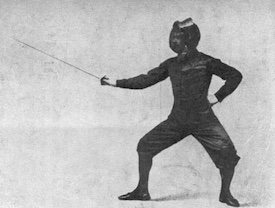maverickronin
Headphoneus Supremus
- Joined
- Apr 5, 2010
- Posts
- 7,390
- Likes
- 421
Quote:
I don't really think the name matters that much, but I'm not a professional engineer either...
Quote:
Well, you've got to pick you poison. IMO there isn't a single good DAP on the market. They all have a fatal flaw somewhere. Using an amp with my D2 is way easier than hacking an SD slot into an iDevice or fixing the UI. The clip+ even had the "pitch problem" until rockbox fixed it. It still doesn't support SDXC though. The Fiio X3 may be the first decent DAP since the venerable Rio Karma if its UI isn't a mess. I'd prefer not to have to hire a retinue of pixies to help me swap micro SD cards, but even the Karma wasn't perfect.
Just clarified a few things there.
Also, I must say that personally I don't really like the "orthodynamic" and "isodynamic" terms... They're more or less marketing terms used by Yamaha and Peerless (orthodynamic); Wharfdale (isodynamic); Sansui and Aiwa called them "omni-dynamic"; Fostex called them "RP type" for "regular phase"; and so on...
While none of those terms are necessarily wrong (or really less accurate in describing the driver than "dynamic" is, respectively), they're not the best terms IMHO. "Orthodynamic" is a combination of "orthogonal" and "dynamic", more or less meaning "pertaining to, characteristic of, or acted upon by forces at right angles"; and "isodynamic" means, similarly (and I take this from dictionary.com):
- Having equal force or strength.
- Connecting points of equal magnetic intensity.
While both are true, they could be applied to one degree or another to both electrostatic and conventional coil ("dynamic") drivers. Planar magnetic, however, avoids that entirely, although it doesn't preclude true ribbon drivers (although nor do ortho/iso-dynamic).
Anyway, I suppose it doesn't really matter so much, as long as everyone understands what's being talked about. I'm just picking nits, having come from the speaker world where "planar magnetic" is perhaps the most well-understood term. "Ribbon" (as refers to true ribbon drivers), however, is often misused for planar magnetic drivers like Infinity's EMIT and Magnepans... That's actually the first term I knew for such drivers, until I learned about the difference in operating principle.
Anyway, let's get back to designing plasma headphones...
I don't really think the name matters that much, but I'm not a professional engineer either...
Quote:
So it's basically only beneficial when forced to use a crap DAP. I haven't seen any measurements of the iPhone 4, but I haven't noticed any audible flaws either. Perhaps I should just relax and enjoy the music then
Well, you've got to pick you poison. IMO there isn't a single good DAP on the market. They all have a fatal flaw somewhere. Using an amp with my D2 is way easier than hacking an SD slot into an iDevice or fixing the UI. The clip+ even had the "pitch problem" until rockbox fixed it. It still doesn't support SDXC though. The Fiio X3 may be the first decent DAP since the venerable Rio Karma if its UI isn't a mess. I'd prefer not to have to hire a retinue of pixies to help me swap micro SD cards, but even the Karma wasn't perfect.






















